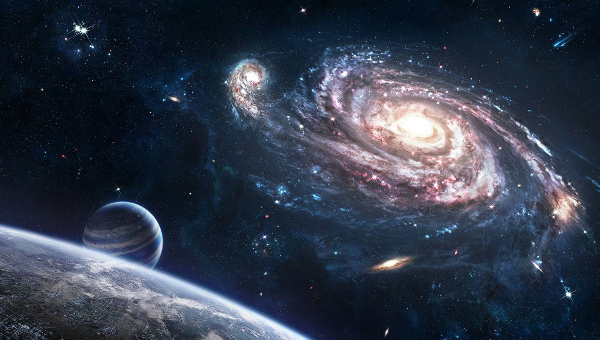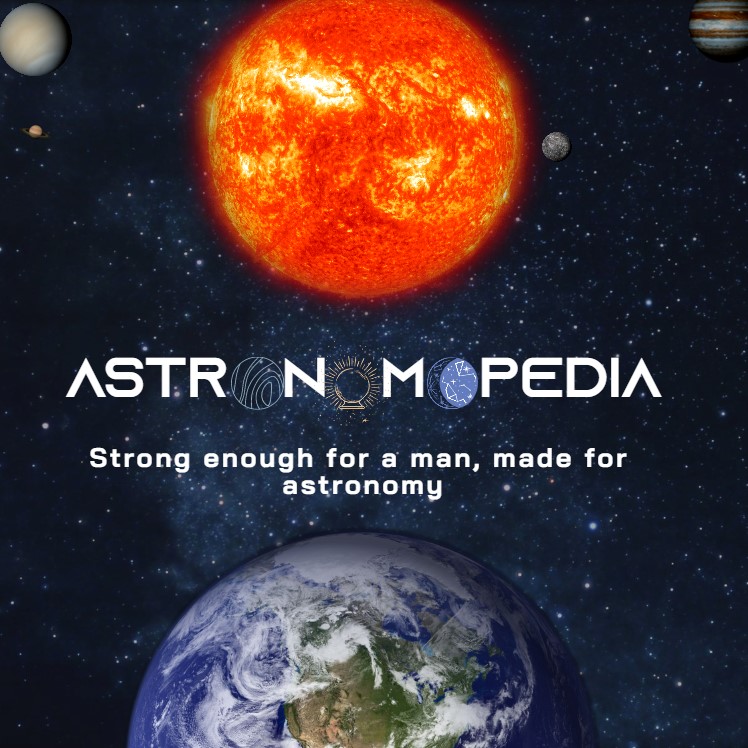
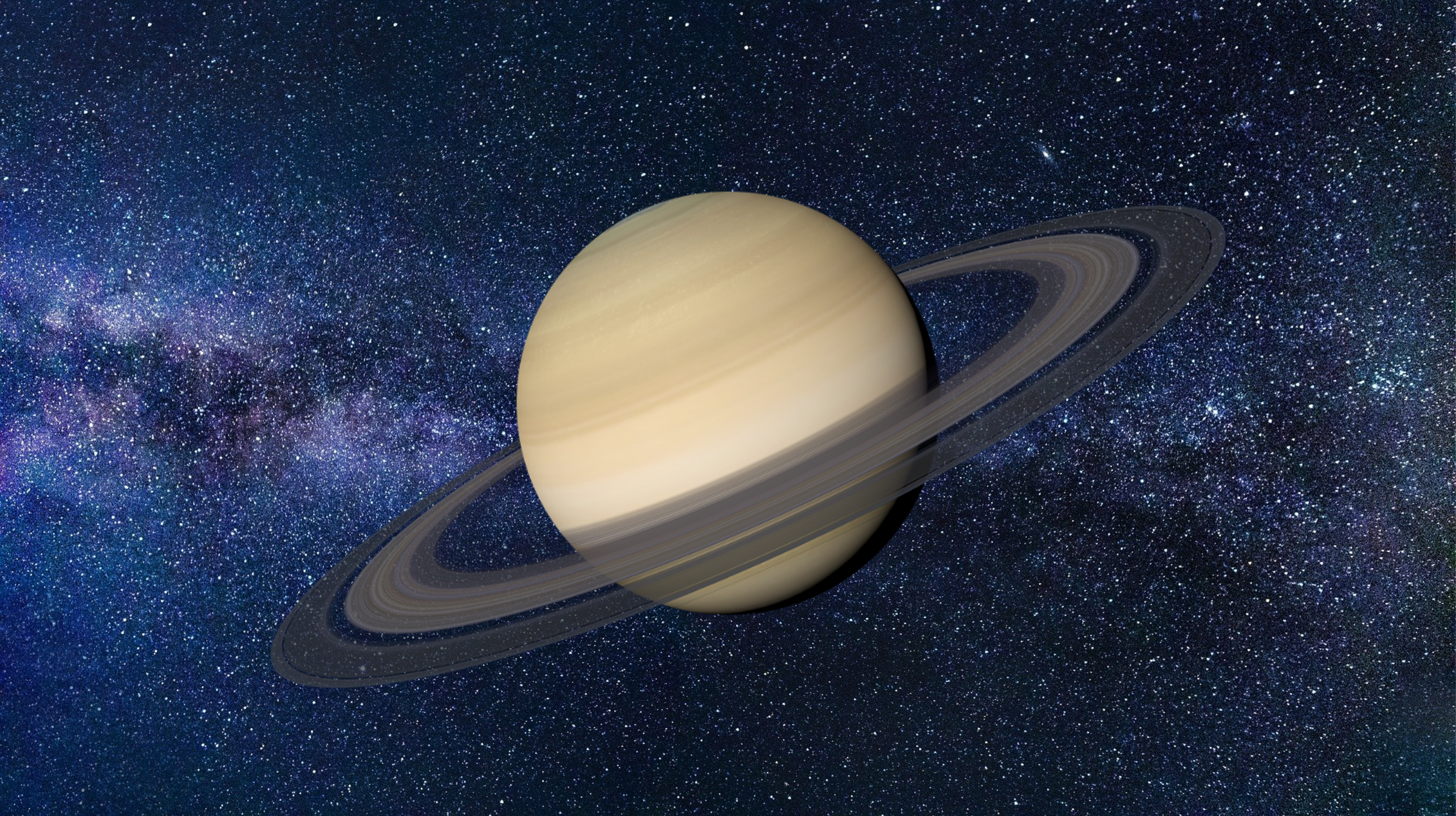
Saturn
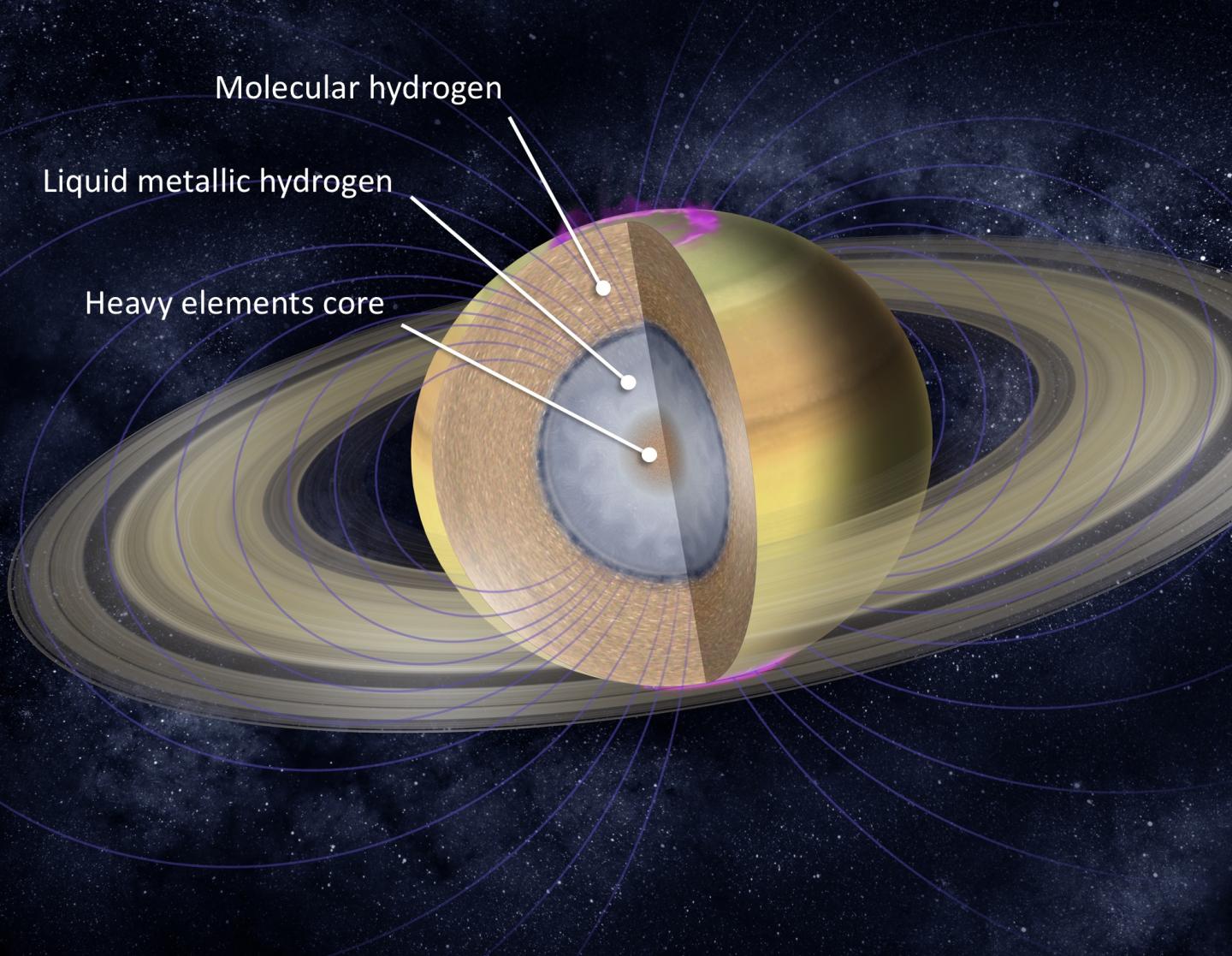
What is Saturn?
Saturn is the sixth planet from our Sun, and after Jupiter, the second-largest planet in the Solar System. It is a gas giant with a radius approximately nine and a half times that of Earth. Saturn has one-eighth the average density of Earth, but due to its larger volume, it is over 95 times more massive.
What is special about Saturn?
Saturn stands out from the other planets due to its stunning ring system. It is not the only planet with rings made of ice and rock, but none are as spectacular or as complicated as Saturn's.
Morphology
Geomorphology
Saturn has a radius of 58,232 km (36,183.687 miles) and a surface area of 42,700,000,000 km² (16,486,562,169.762 miles²).
Anatomy
Saturn is 95 times as massive as Earth, indicating its mass is 568,319,000,000,000,000,000,000 tons, and though it occupies a volume 766 times greater (827,130,000,000,000 km³). It has a mean density of 0.687 g/cm³, which is only 12% of Earth's and less than the density of water, so it could float on the ocean if such an ocean existed.
The outer atmosphere is usually bland and bereft in contrast, although long-lived features could indeed appear. Saturn's wind speeds can attain 1,800 km/h (1,100 mph | 500 m/s), which would be faster than Jupiter's winds but not as fast as Neptune's. The planet's most notable feature is its recognisable ring system, most of which is composed of ice particles with a small amount of rocky debris and dust.
Is it possible to land on Saturn?
While a spacecraft would have no place to land on Saturn, it would also be unable to fly through unharmed. Any spacecraft attempting to fly into the planet would be crushed, melted, or vaporised due to the extreme pressures and temperatures deep within the planet.
Tectonic plates
Due to Saturn's lack of surface, it doesn't have any tectonic plates.
Location
Saturn orbits the Sun at an average distance of 1,427,000,000 km (887,000,000 miles). Its closest distance to Earth is about 1,200,000,000 km (746,000,000 miles).
Physico-chemical properties
Saturn, like Jupiter, is mostly made up of hydrogen and helium. Saturn's core is a dense core of metals such as iron and nickel that is surrounded by rocky material and other compounds that have solidified due to intense pressure and heat. It is surrounded by liquid metallic hydrogen within a layer of liquid hydrogen, similar to Jupiter's core but much smaller.
The composition of Saturn's clouds changes as depth and pressure increase. Ammonia crystals compose the clouds in the highest regions, where temperatures range between 100 K (-173°C | -279.67°F) and 160 K (-113°C | -171.67°F) and pressures range between 0.5 and 2 bars. At temperatures ranging from 185 K (-88°C | -126.67°F) to 270 K (-3°C | 26.3°F), H2O water ice has a pressure range of 2.5 to 9 bar. These clouds mix with ammonium hydrosulphide NH4SH ice clouds at pressures ranging from 3 to 6 bar and temperatures ranging from 190 K (-83°C | -117.67°F) to 235 K (-38°C | -36.67°F). Finally, in the lower layers, where pressures range from 10 to 20 bar and temperature varies from 270 K (3°C | 26.33°F) to 330 K (57°C | 134.33°F), there is a region of ammonia-containing water droplets (ammonia in aqueous solution).
Temperature
Saturn's core temperature reaches 12,000 K (11,726.85°C | 21,140.33°F) and, like Jupiter, it radiates more energy into space than it receives from the Sun, about 1.78 times. Saturn, being further from the Sun, is significantly colder than Jupiter, with an average surface temperature of about 97 K (-176.111°C | -285°F).
Age
Saturn has existed for 4,503,000,000 years.
Force fields
Gravitational force
The gravity of Saturn is 10.44 m/s².
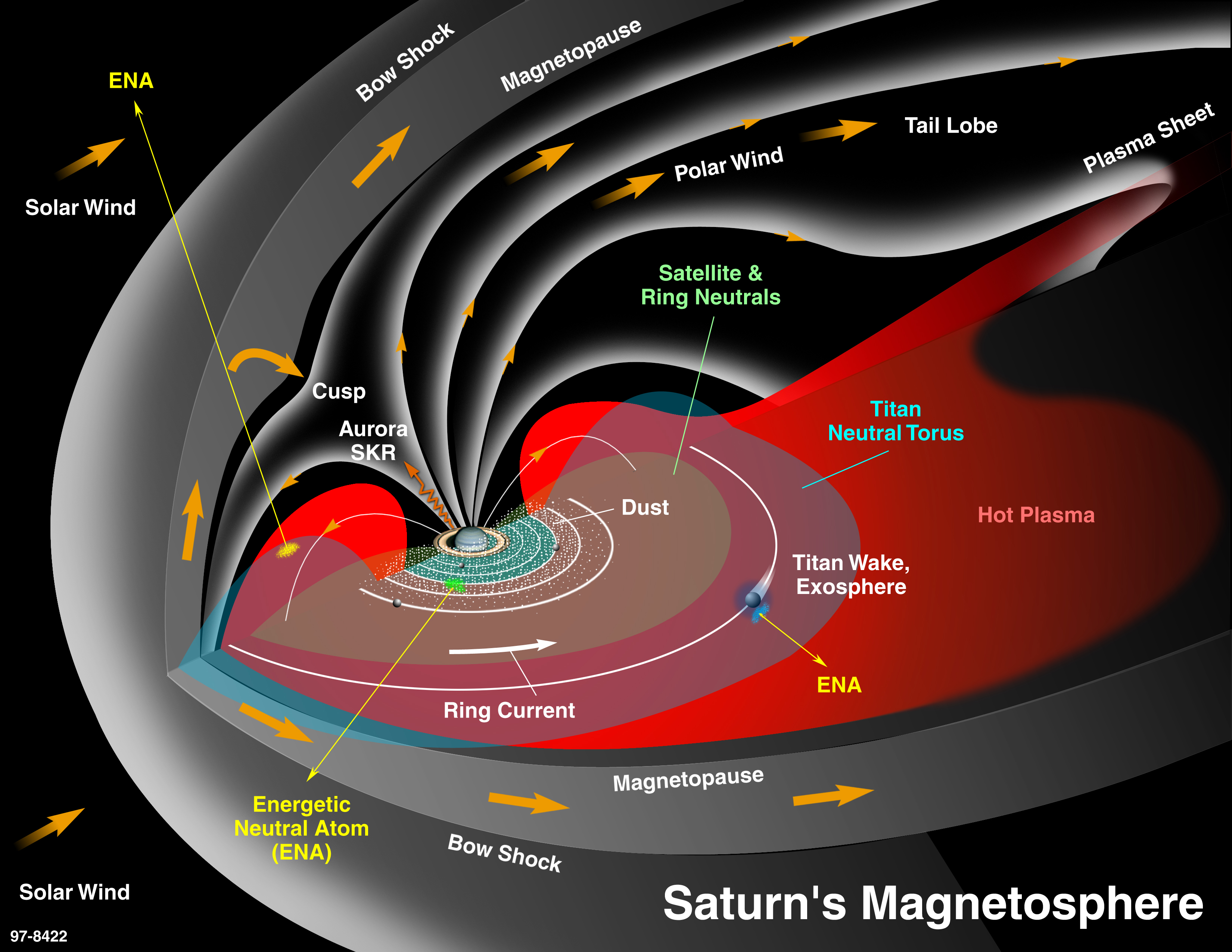
Magnetic field
At Saturn's equator, the magnetic field is roughly 21 μT(0.21 G), which is equivalent to a dipole magnetic moment of about 4.6*10¹⁸ T•m³. Saturn's magnetic moment is around 580 times stronger than Earth's, making Saturn's magnetic field slightly weaker than Earth's.
Motions
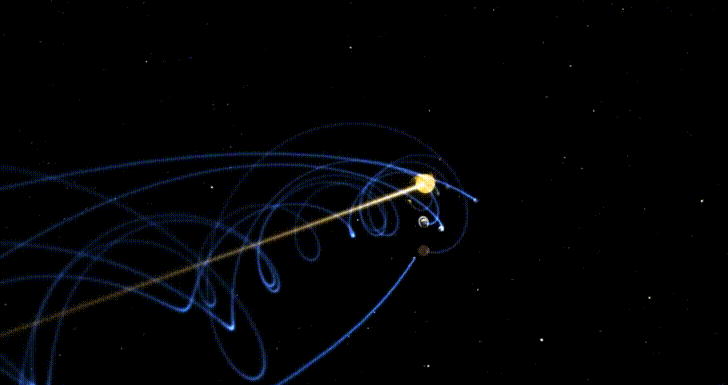
Orbit
Saturn's orbit around the Sun is about 29.5 Earth years.
Rotation
Saturn's rotation is about 10 hours and 33 minutes.
Satellite systems

Moon system
83 moons orbit Saturn. The International Astronomical Union (IAU) has confirmed and named 63 moons, and another 20 moons are pending confirmation of finding and official designation. The massive moon Titan, which is the largest of Saturn's moons, is larger than the planet Mercury. Other moons are as small as athletic venues.

Ring system
Saturn's rings are believed to be fragments of comets, asteroids, or broken moons that disintegrated before becoming planets and were blasted apart by Saturn's strong gravity. They are composed of countless quantities of tiny pieces of rock and ice that have been dusted with other substances. The majority of the ring debris is made up of dust-sized ice grains and pieces the size of houses. Some of the particles are the size of mountains. From Saturn's cloud tops, the rings would appear mostly white, and interestingly, each ring orbits the planet at a distinct speed.
Saturn's ring system reaches up to 282,000 kilometres (175,000 miles) from the planet, but the vertical height in the major rings is normally approximately 10 metres (30 feet). The rings, which are named according to the sequence in which they were found, are generally close together, with the exception of Rings A and B, which are separated by the Cassini Division, a chasm measuring 4,700 kilometres (2,920 miles) in width. A, B, and C are the three major rings. The rings D, E, F, and G are relatively recent discoveries and are fainter.
The D ring, C ring, B ring, Cassini Division, A ring, F ring, G ring, and finally the E ring are the outermost rings, starting at Saturn and travelling outward.
Author: William Homier
Editor: William Homier
Sound credit goes to SpaceRip.
This page was last edited on 18 November 2022, at 18:30 (HAE).
Sources:
